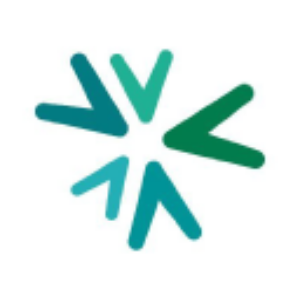Viridian Therapeutics Announces Positive Topline Results from Veligrotug (VRDN-001) Phase 3 THRIVE Clinical Trial in Patients with Active Thyroid Eye Disease
- Veligrotug (VRDN-001) achieved all primary and secondary endpoints in THRIVE, the largest phase 3 trial conducted to date of an anti-IGF-1R antibody in thyroid eye disease (TED), with a week 15 proptosis responder rate (PRR) of
- All secondary endpoints were highly statistically significant (p < 0.0001), with clinically meaningful patient outcomes, including complete resolution of diplopia in
- Veligrotug was generally well-tolerated with no treatment-related serious adverse events (SAEs), and a
- THRIVE-2 study of veligrotug in patients with chronic TED fully enrolled with topline data readout on track for year-end 2024; BLA submission anticipated in second half of 2025, as planned -
- REVEAL-1 and REVEAL-2, global phase 3 trials of VRDN-003 dosed every four (Q4W) or eight weeks (Q8W), initiated in August; VRDN-003 is a subcutaneous, half-life-extended anti-IGF-1R antibody with the same binding domain as veligrotug -
- Cash, cash equivalents, and short-term investments of
- Conference call and webcast to be held today, September 10th at 8:00 a.m. ET -
“We are thrilled to see these exciting THRIVE topline results which met our high bars for both efficacy and safety. We were particularly pleased to observe the rapid onset of clinically meaningful responses across all endpoints, and veligrotug’s safety profile exceeded our expectations. Veligrotug utilizes a differentiated, abbreviated five infusion dosing regimen that has the potential to bring a more convenient treatment option with lower IV burden for patients, compared to the current standard of care,” said Steve Mahoney, Viridian’s President and CEO. “Our excitement with the THRIVE results extends well beyond veligrotug to the other half of our clinical TED franchise, subcutaneously administered VRDN-003, for which we initiated two phase 3 clinical trials last month. We believe veligrotug and VRDN-003 have the potential to become the preferred treatments for TED patients. Further, the strong THRIVE results reinforce our confidence in VRDN-003, which shares the same binding domain as veligrotug, as a potential best-in-class infrequent subcutaneous injection that we believe will be transformative for TED patients and expand the market. Our team has executed extremely effectively with both THRIVE and THRIVE-2, exceeding enrollment targets in both studies and across geographies including in
“These phase 3 clinical data demonstrate the robust clinical activity of veligrotug. The data showed substantial improvements in proptosis, clinical activity score, and diplopia in patients with TED after just five infusions, and these strong results are consistent with the clinical outcomes of IGF-1R antagonism in TED. Veligrotug also showed a rapid onset of action which I believe is meaningful for patients,” said Michael Yen, M.D., an investigator in THRIVE and Professor of Oculoplastic Surgery and Ophthalmology, at Baylor College of Medicine. “Veligrotug showed a favorable safety profile in a large phase 3 clinical trial that closely monitored safety, including the potential for hearing impairment. As a THRIVE investigator, I am excited to see these results and look forward to the REVEAL clinical trials for VRDN-003 to help bring additional potential treatment options for patients living with TED.”
VRDN-001 THRIVE Phase 3 Topline Results
THRIVE Clinical Activity Data
THRIVE met the primary and all secondary endpoints at 15 weeks after five infusions of veligrotug, showing highly statistically significant (p < 0.0001) improvements on all of the measured signs and symptoms of TED. Veligrotug additionally showed a rapid onset of action, with the majority (
Patients receiving veligrotug had statistically significant and clinically meaningful improvements across the following key disease endpoints at the primary efficacy analysis timepoint of 15 weeks:
Proptosis:
-
Proptosis Responder Rate:
70% proptosis responder rate (PRR) in patients receiving veligrotug, compared with5% of patients receiving placebo (64% placebo-adjusted) (p < 0.0001). PRR is defined as at least a 2-millimeter (mm) reduction in proptosis from baseline in the study eye without worsening in the fellow eye (≥2 mm increase), as measured by exophthalmometry. - Proptosis Mean Reduction: 2.9 mm mean reduction in proptosis from baseline in patients receiving veligrotug, compared with 0.5mm reduction in patients receiving placebo (2.4mm placebo-adjusted) (p < 0.0001), as measured by exophthalmometry.
Diplopia:
-
Diplopia Complete Resolution:
54% complete resolution of diplopia in patients receiving veligrotug, compared with12% of patients receiving placebo (43% placebo-adjusted) (p < 0.0001). Diplopia resolution is defined by patients achieving a score of 0 on the Gorman subjective diplopia scale at week 15, among patients with diplopia at baseline (n=76). -
Diplopia Response:
63% achieved a diplopia response in patients receiving veligrotug, compared with20% of patients receiving placebo (43% placebo-adjusted) (p < 0.0001). Diplopia response is defined by patients achieving a reduction of at least 1 on the Gorman subjective diplopia scale at week 15, among patients with diplopia at baseline.
Clinical Activity Score (CAS):
-
CAS Reduction to 0 or 1:
64% of patients receiving veligrotug achieved maximal or near-maximal therapeutic effect on CAS, compared with18% of patients receiving placebo (46% placebo-adjusted) (p < 0.0001), defined as reaching a CAS of 0 or 1. CAS measures inflammatory signs and symptoms of TED, providing a composite score of pain, as well as redness and swelling of the eyelids and conjunctiva, on a scale from 0 to 7. - CAS Mean Reduction: 3.4-point mean reduction in CAS from baseline for patients receiving veligrotug, compared with 1.7-point reduction in patients receiving placebo (1.7-point placebo-adjusted) (p < 0.0001).
Overall Response:
-
Overall Responder Rate:
67% of patients receiving veligrotug achieved an overall response, compared with5% of patients receiving placebo (61% placebo-adjusted) (p < 0.0001). Overall Responder Rate is defined as achieving a proptosis response and a ≥2-point reduction in CAS from baseline without worsening in the fellow eye in either proptosis (2mm increase) or CAS (2-point increase).
THRIVE Safety Data
-
Generally Well-Tolerated: Veligrotug was generally well-tolerated with a safety profile consistent with previous veligrotug studies. The majority of adverse events (AEs) were mild, and there was a low rate (
4% ) of discontinuations in the veligrotug arm. There were no treatment-related serious AEs. -
Low Rate of Hearing Impairment: There was a
5.5% placebo-adjusted rate of hearing impairment AEs in THRIVE (16% incidence in patients receiving veligrotug, compared with10.5% incidence in patients receiving placebo).
Veligrotug: On-Track to Submit Biologics License Application (BLA) in Second Half of 2025
The second phase 3 clinical trial of veligrotug, THRIVE-2, in patients with chronic TED is ongoing. Viridian completed enrollment of THRIVE-2 in July 2024, and topline data readout is on track for year-end 2024. Viridian anticipates submitting a BLA for veligrotug for the treatment of TED in 2H 2025, as planned.
VRDN-003 REVEAL Clinical Trials Initiated in August; Potential Best-in-Class Program on Track for BLA Submission by Year-end 2026, Approximately One Year After Veligrotug BLA Submission
VRDN-003 is an IGF-1R antibody with the same binding domain as veligrotug and is believed to be the only anti-IGF-1R in development with an extended half-life.
Viridian believes these topline results from THRIVE provide strong support for a potential best-in-class profile of VRDN-003, with the potential to deliver clinical efficacy and safety consistent with veligrotug in a low-volume, infrequent, self-administered, subcutaneous injection that patients take at home.
Viridian initiated two global phase 3 clinical trials for VRDN-003 in August as planned: REVEAL-1 and REVEAL-2 in active and chronic TED, respectively. Both trials will evaluate VRDN-003 subcutaneously administered every Q4W or Q8W and will assess outcomes versus placebo. Viridian anticipates topline data from both trials in the first half of 2026, with a BLA submission for VRDN-003 for the treatment of TED by year-end 2026.
Conference call and webcast information
Viridian will host a conference call today at 8:00 a.m. ET to discuss the THRIVE topline data. The dial-in number for the conference call is (800) 715-9871 for domestic participants and (646) 307-1963 for international participants. The conference ID is 8636908.
A live webcast of the conference call can be accessed through the “Events” page in the Investors section of the Viridian Therapeutics website. Following the live webcast, an archived version of the call will also be available on the website.
About Viridian Therapeutics
Viridian is a biopharmaceutical company focused on engineering and developing potential best-in-class medicines for patients with serious and rare diseases. Viridian’s expertise in antibody discovery and protein engineering enables the development of differentiated therapeutic candidates for previously validated drug targets in commercially established disease areas.
Viridian is advancing multiple candidates in the clinic for the treatment of patients with thyroid eye disease (TED). The company is conducting a pivotal program for veligrotug (VRDN-001), including two global phase 3 clinical trials (THRIVE and THRIVE-2), to evaluate its efficacy and safety in patients with active and chronic TED. Viridian is also advancing VRDN-003 as a potential best-in-class subcutaneous therapy for the treatment of TED, including two ongoing global phase 3 pivotal clinical trials, REVEAL-1 and REVEAL-2, to evaluate the efficacy and safety of VRDN-003 in patients with active and chronic TED.
In addition to its TED portfolio, Viridian is advancing a novel portfolio of neonatal Fc receptor (FcRn) inhibitors, including VRDN-006 and VRDN-008, which has the potential to be developed in multiple autoimmune diseases.
Viridian is based in
Forward Looking Statements
This press release contains forward-looking statements within the meaning of the Private Securities Litigation Reform Act of 1995. These statements may be identified by the use of words such as, but not limited to, “anticipate,” “believe,” “continue,” “could,” “estimate,” “expect,” “intend,” “may,” “might,” “on track,” “plan,” “potential,” “predict,” “project,” “design,” “should,” “target,” “will,” or “would” or other similar terms or expressions that concern our expectations, plans and intentions. Forward-looking statements are neither historical facts nor assurances of future performance. Instead, they are based on our current beliefs, expectations, and assumptions. Forward-looking statements include, without limitation, statements regarding: preclinical and clinical development of Viridian’s product candidates veligrotug (formerly VRDN-001), VRDN-003, VRDN-006 and VRDN-008, including Viridian's view that the THRIVE data provide strong support for VRDN-003's clinical profile; anticipated enrollment timeline in VRDN-003 trials, REVEAL-1 and REVEAL-2; milestones; timelines; anticipated data results and timing of their disclosure, including topline results; regulatory interactions and anticipated timing of regulatory submissions, including the anticipated BLA submission for veligrotug; Viridian’s expectation that its data package will support a BLA submission for veligrotug in the second half of 2025, pending data; Viridian’s expectation that its data package will support marketing authorization applications in
New risks and uncertainties may emerge from time to time, and it is not possible to predict all risks and uncertainties. No representations or warranties (expressed or implied) are made about the accuracy of any such forward-looking statements. Such forward-looking statements are subject to a number of material risks and uncertainties including but not limited to: potential utility, efficacy, potency, safety, clinical benefits, clinical response and convenience of Viridian’s product candidates; that results or data from completed or ongoing clinical trials may not be representative of the results of ongoing or future clinical trials; that preliminary data may not be representative of final data; the timing, progress and plans for our ongoing or future research, preclinical and clinical development programs; changes to trial protocols for ongoing or new clinical trials, including adjustments that we may make to the VRDN-003 clinical trial designs as a result of the veligrotug data; expectations and changes regarding the timing for regulatory filings; regulatory interactions expectations and changes regarding the timing for enrollment and data; uncertainty and potential delays related to clinical drug development; the duration and impact of regulatory delays in our clinical programs; the timing of and our ability to obtain and maintain regulatory approvals for our therapeutic candidates; manufacturing risks; competition from other therapies or products; estimates of market size; other matters that could affect the sufficiency of existing cash, cash equivalents and short-term investments to fund operations; our financial position and projected cash runway; our future operating results and financial performance; Viridian’s intellectual property position; the timing of preclinical and clinical trial activities and reporting results from same; and those risks set forth under the caption “Risk Factors” in our most recent quarterly report on Form 10-Q for the quarter ended June 30, 2024, filed with the Securities and Exchange Commission (SEC) on August 8, 2024 and other subsequent disclosure documents filed with the SEC. Any forward-looking statement speaks only as of the date on which it was made. Neither the company, nor its affiliates, advisors, or representatives, undertake any obligation to publicly update or revise any forward-looking statement, whether as a result of new information, future events or otherwise, except as required by law. These forward-looking statements should not be relied upon as representing the company’s views as of any date subsequent to the date hereof.
View source version on businesswire.com: https://www.businesswire.com/news/home/20240910052986/en/
Louisa Stone, 617-272-4604
Manager, Investor Relations
IR@viridiantherapeutics.com
Source: Viridian Therapeutics, Inc.







